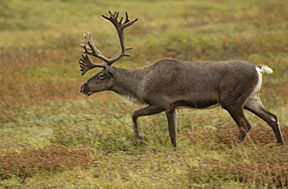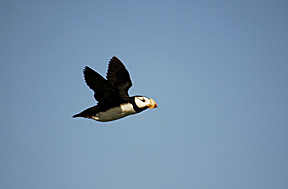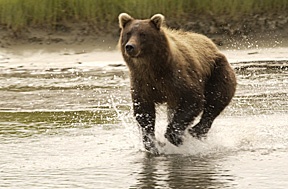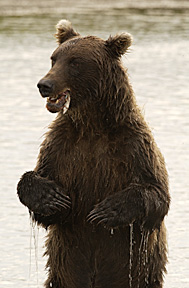|
|
The D1H - H is for Hot!08.28.01
Nikon has traditionally named their "fastest" cameras with an H, like the F2H for example that shoots 10fps. With this lineage, I think it more than fitting that they put an H in the D1H designation. Speed is what the H is all about, and not just in the fps (frame per second) but in its entire operation. This is what makes the D1H the great wildlife photography, action photography camera it is! Speed
The fps and write speed are not the only thing that's faster,
so is the preview speed. The time is takes for the D1H to call up an image on
the monitor is a There is nothing different about the AF system on the D1H, it's the same as the D1. But being coupled to the 5fps and 40 frame buffer, you'll be fooled into thinking the AF is faster. This is because of that 40 frame buffer "freeing" up some of the camera resources to in a sense so the camera can simply operate faster.
CustomizingAnother way the D1H is faster is the method in which you can customize it to fit your own shooting needs and style (compared to the D1, it has the same system as the D1x) . The same menu system that resides in the D1x is in the H. The four menus are easy to read and functions easy to understand so you can program on the fly, or create up to four separate banks of custom settings, camera settings and the like that you can select with just a click! FlashWell here's where the D1H again speeds things up! Flash on the D1 is difficult as best and only after lots of use, predictable. Face it, it was a step back in TTL flash photography. That's far from the performance you'll experience with the D1H (or x). Flash photography is a snap again, as in snap the SB-28dx into the hot shoe and snap away!
Many have asked about the SB-50 flash. I'm of the same opinion as David, it's a cute flash made for those who want an auxiliary flash for their built-in pop-up flash. The flash foot design of the SB-50 is superior to any other flash on the market, but that's about where its professionalism stops. When the subject is about 12 feet or less away and you're working at f8, the SB-50 does a great job even with the 14mm. Go outside the range of the flash and you'll experience overexposed images, mirroring results obtained with the D1/SB-28dx, with the D1H. ExposureThank goodness that's a non-issue again, I was getting a headache! The main exposure problem with the D1, the classic white bird on blue water is not present on the D1H. The only exposure problem I have found with the D1H and X is in shooting totally flat light, ie fog. In this situation I have to dial in +1 stop for the exposure I want. Since I don't shoot in a fog often (take that as you want), it's really not a big issue as all of my other exposures are so right on, I'm a happy camper! FamiliarityThe speed in which you can pick up a D1H if you're a D1 shooter and start shooting will shock you! There is no new learning curve, you can plug in your settings from the D1 into the D1H, shoot and get the results you want. In the D1 and the D1H (and X), I shoot in the FINE mode, Cloudy -3, Aperture Priority nearly 98% of the time and the results are just stunning. The D1H (and x) has a custom setting #32 Color Mode that permits the selections of Adobe RGB color space which was not available on the D1. Shooting for publication, I really like this and use it all the time. Not so HotThere is one issue with the D1H (and x) that drives me nuts, and that has to do with the rear LCD monitor. The D1H and X offer eight displays of information when you preview an image on the monitor (one at a time). While this seems cool and great on paper, it's not operationally very swift. For example, I like to use the blinkie highlights so that's what I have selected. Be that as it may because sometimes it appears when I depress the monitor button and sometimes it doesn't. And if you want both the blinkie highlights and Histogram to appear at the same time, forget it, it doesn't work! The D1H BatteryThe Power for the D1H is the EN-4, the same battery as that for the D1. It is essential that when you first get this battery, your charge it by refreshing it three times in a row prior to its first use. This ensures that you'll get the best possible performance from your D1H. You should expect a minimum of 300 captures and a maximum of 1000 on one charge. The one problem with the D1H that within 300 captures, the battery indicator indicated the battery is at half. This is not accurate as you might be able to fill as many as three 256MB CompactFlash cards after the battery indicator displays half full. The real problem to all of this is the viewfinder info disappears as soon as you remove your finger from the shutter release once the battery indicator hits half. This can be annoying at the very least. It also means you must mentally think about the battery consumption rather than just being able to capture images. Bottom Line
|







